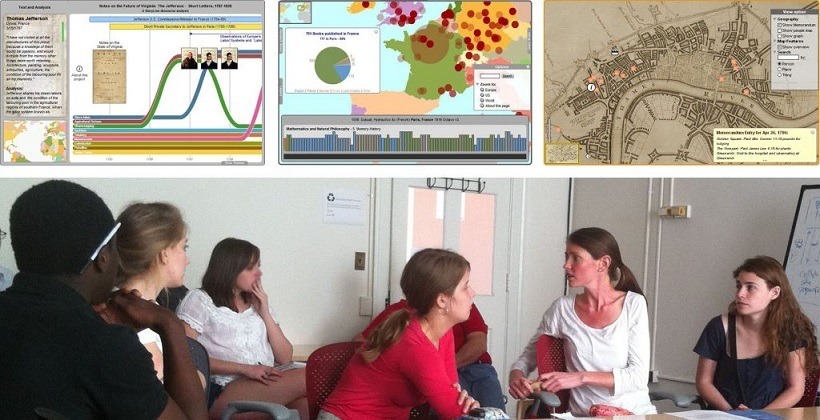Be Deliberate, Pick The Right Tool, Tell The Story
As machines become increasingly accurate and intelligent, we humans will need to sharpen our skills. One of your primary responsibilities as a Learning and Development leader is to sharpen your skill and ensure that you empower the workforce to develop the four sets of skills critical to thriving in 2030. I have compiled a series of articles titled "eLearning Skills 2030" to explore the key skills to help you future-proof your career and lead your team. This article explores the skill of data visualization, why it is critical, and what actionable steps you can take today to improve it.
What Is Data Visualization?
Data visualization is the graphical or pictorial representation of data. The adage that a picture is worth a thousand words fits perfectly here. When we review data described in numbers or words, we may miss critical information. A graph or a picture of the data can reveal trends, outliers, patterns, errors, and more importantly, a story we otherwise may miss. Data visualization is part of the broader data literacy skillset. Data visualization is used everywhere. In sales and marketing, where organizations review social media metrics to detect patterns and drive strategy. In finance, where analysts review asset price movements over time to detect trends and make investment decisions. In logistics and transportation, where organizations can track the movement of ships and aircraft, and assess the best routes to facilitate speed and safety.
Why Is Data Visualization Important?
Information is power, and data visualization allows you to see patterns, detect errors, and glean more information and insights about what works well, what needs improvement, and where to allocate your resources in the business to improve the customer experience and the employee experience, and deliver business performance results. Renown data scientist Hans Rosling, whom I had the honor of meeting at the 2012 TEDxSummit, had an uncanny way to visualize data, not only by using 3D charts, but also using household items, and as a result, helped us understand the real impact of data in business and in life. Today, as hardware has become faster, Artificial Intelligence (AI) more ubiquitous, and data visualization software applications more robust, graphic representation of data is immediate and precise. Data visualization helps leaders and organizations absorb information quickly and, as a result, make faster and better decisions. Visualizing data helps you see more clearly where and how to take action and drive the business forward.
How Can You Sharpen Your Data Visualization Skills?
Data visualization is an important and sought-after skill. Several elements come into play when sharpening data visualization efforts, including being deliberate, picking the right tools, using color cues, and telling a compelling story to inspire action.
Be Deliberate With Using And Depicting Data
To make the data tell the story, you need to be deliberate about the business goal by asking several questions before you dive into the data visualization effort. You have to define the audience, consider what questions they may have, and what answers they are seeking or are perhaps not willing to consider. What problem are you trying to solve or what action are you seeking to inspire in your audience as a result of the data visualization? Additionally, before you start depicting data, you will need to also be deliberate about preparing and cleaning the data, ensuring accessibility, context, and source credibility. Georgetown University has developed a handy rubric that can help guide your data preparation.
Pick The Right Tool
With so many ways to depict data, it is important to know which type of graph and the right tool to choose to depict various pieces of data. For example, in terms of charts, to depict the relationship between two or more variables, you can use a scatterplot or a line-column chart. To show change over time, you can use a line chart or column chart. To show an ordered list, a bar chart can easily depict how the values rank when sorted by a specific criterion. When depicting how one part relates to the whole, a pie chart or a tree map can be quite useful. Several great resources exist to serve as guides to which chart to use when including one developed by the Financial Times [1]. Of course, today Artificial Intelligence can recommend the right chart for you. In addition to charts, infographics can include a collection of graphs, text, and diagrams to drive a point, such as this infographic about the most useful inventions of all time. Data art depictions like this wind map are yet another way to present an idea visually and convincingly. In terms of tools and platforms, there are numerous available. A quick web search can reveal several such platforms, and guides such as this can offer guidance.
Use Color Cues
Color can be quite useful in depicting a visual representation of data because it is powerful. You can use color to highlight or underscore data. It is important to not go overboard with color use, which could muddle the message and dilute it. Also, it is important to ensure color use takes into consideration color blindness in audiences, which falls under the accessibility element addressed earlier.
Tell The Story To Inspire Action
The most impactful result of successful data visualization is the action their story inspires. Storytelling is vital and complementing to successful data visualization. When you select the right way to depict data to underscore the most important findings that data offers, you can highlight new learning and ideas and share them more persuasively. In turn, your data visualization can generate new questions and point to new paths not previously considered. The overall outcome is that better data visualizations can generate better decisions, and drive business action and performance results faster.
Conclusion
Data visualization entails several elements, including a focus on the business context, the audience, and the problem at hand. Successful data visualization requires selecting the right tools and platforms, and being deliberate with data quality, depiction, source credibility, and accessibility among others. As a leader, you will need to sharpen your data visualization skills and those of your team so that you can thrive today, in 2030, and beyond.









